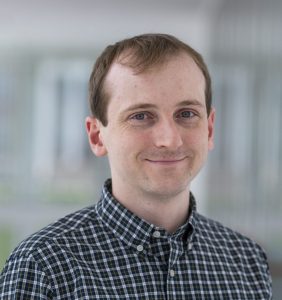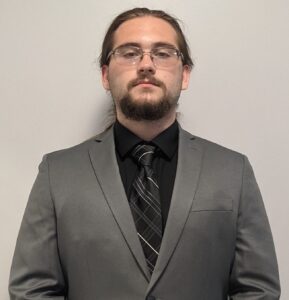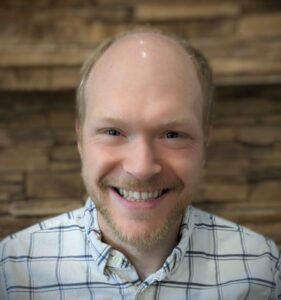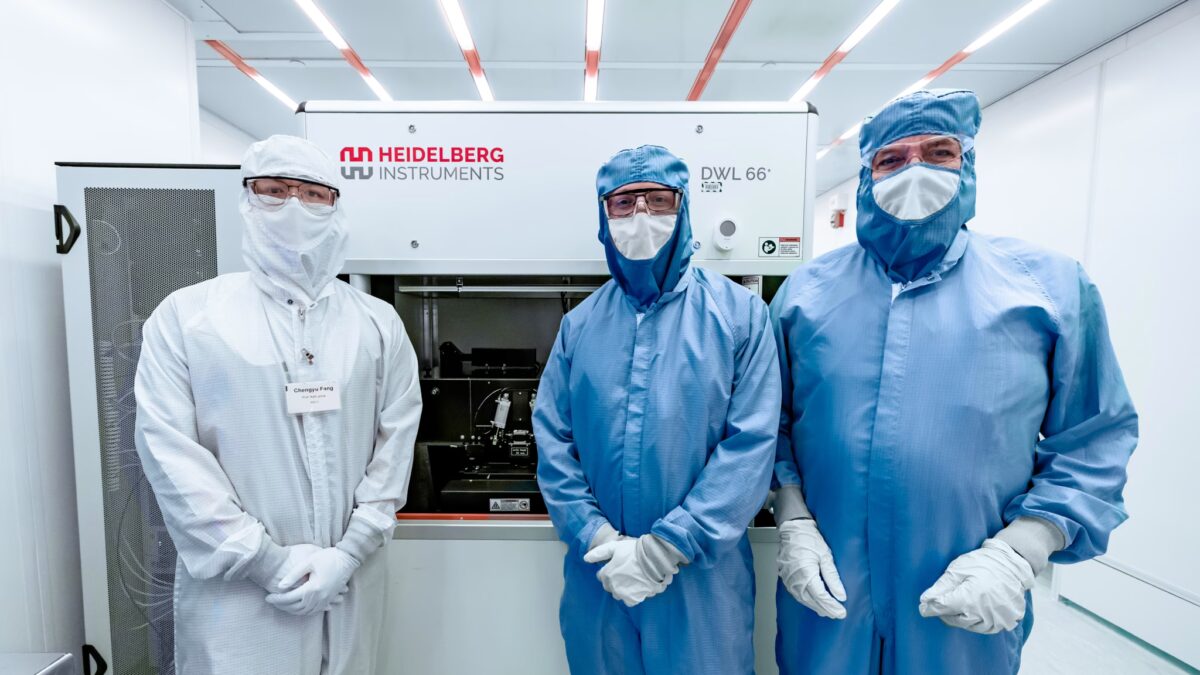The eighth-annual Chicago Quantum Summit was held Nov. 3-4, 2025 convening more than 500 top industry, government, and academic leaders from around the world for dialogue aimed at shaping the future of quantum technology. Held in downtown Chicago, at the center of the globally recognized Illinois-Wisconsin-Indiana quantum hub, the two-day event highlighted breakthrough research, commercialization […]
Read the full article at: https://research.wisc.edu/uncategorized/2025/11/06/uw-madison-builds-on-partnerships-at-chicago-quantum-summit/Quantum Science
Q-NEXT quantum center renewed for five years
Welcome, Prof. Josiah Sinclair!

When he was younger, UW–Madison assistant professor of physics Josiah Sinclair wanted to be a scientist-inventor when he grew up. In high school, he would ask questions in biology and chemistry classes that his teachers said were really physics questions. So, when he began his undergrad at Calvin University, he majored in physics, believing that experimental physics would be at the intersection of his interests. In the end, it was quantum physics that really fascinated him, motivating him to complete a PhD in experimental quantum optics and atomic physics at the University of Toronto. He says, “The ethos of my PhD group was this idea that with modern technology, maybe we can invent an apparatus that can reproduce the essential elements of this or that classic thought experiment and learn something new.” After completing a postdoc at MIT, Sinclair joined the UW–Madison physics department as an assistant professor in August, where he will tinker in the lab as an experimental quantum physicist, and just maybe invent a new kind of neutral atom quantum computer.
Please give an overview of your research.
There’s a global race underway to build a quantum computer—a machine that operates according to the laws of quantum mechanics and uses an entirely different, more powerful kind of logic to solve certain problems exponentially faster than any classical computer can. Quantum computers won’t solve all problems, but there’s strong confidence they’ll solve some very important ones. Moreover, as we build them, we’re likely to discover new applications we can’t yet imagine.
The approach my group focuses on uses arrays of single neutral atoms as qubits. Right now, the central challenge in practical quantum computing is how to scale up quantum processors without compromising their quality. Today’s atom-array quantum computers are remarkable, hand-built systems that have reached hundreds or even thousands of qubits in recent years—a truly impressive feat and possible in part due to pioneering work done right here in Madison. However, as these systems grow larger, we’re hitting fundamental size limits that call for new strategies.
My lab is working to develop modular interconnects for neutral-atom quantum computers. Instead of trying to build a single massive machine, we aim to link multiple smaller systems together using single photons traveling through optical fibers. The challenge is that single photons are easily misplaced, so to make this work, we need to develop the most efficient atom–photon interfaces ever built—pushing the limits of our ability to control the interaction between one atom and one photon.
Once we get these quantum links working, we’ll have realized the essential building block for a truly scalable quantum computer and maybe someday the quantum internet. Beyond computing, these technologies could also enable new kinds of distributed quantum sensors, where multiple quantum systems work together to detect extremely faint signals spread across a large area, like photons arriving from distant planets.
What are the one or two main projects your new group will work on?
Our main focus will be to build two neutral atom quantum processors in adjacent rooms and link them together with an optical fiber. This project will teach us how to integrate highly efficient photonic interfaces—such as optical cavities—with atom arrays, and how to precisely control the interactions between atoms and photons. Step by step, we aim to demonstrate atom-photon entanglement and eventually send quantum information back and forth through the fiber.
We’re collaborating with a new company called CavilinQ, a Harvard spin-out supported by Argonne National Lab, to integrate a new cavity design with the geometry we want to explore for atom-photon coupling. Because we intend to iterate rapidly on the cavity design, our setup will be built on a precision translation stage, allowing us to easily slide the system in and out and swap out cavity components.
Another project in the lab will focus on developing a new kind of cold-atom quantum sensor. Most current sensors rely on magneto-optical traps, which require bulky electromagnets and impose constraints that limit performance. We plan to explore magnetic-field-free trapping techniques that could lead to simpler, more compact, and ultimately higher-performance quantum sensors.
What attracted you to Madison and the university?
Well, for me professionally, Madison’s a powerhouse in atomic physics and quantum computing. There are groups here that have been highly influential since the beginning in developing neutral atoms as a platform for quantum information science. So there’s a strong atomic physics community here that has incredible overlap with my research interests, and a thriving broader quantum information community as well. Some people work best in isolation, but that is not who I am, so the prospects of joining this vibrant collaborative environment was very appealing to me.
I also really enjoyed all my interactions with the members of the search committee and other faculty here both during my interview and subsequent visits. On the personal side, my wife’s family is all in the Chicago area, so the prospects of being so close to one side of the family were very appealing. We have a 18-month-old daughter, and when we visited, we just had such a positive impression of Madison as a place to have a family and to grow up.
What is your favorite element and/or elementary particle?
It’s rubidium. I worked with it in my PhD, I worked with it in my postdoc, and I will work with it again. It’s simple. It has one electron in the outer valence shell, which makes it easy to work with. It was one of the first atoms to be laser cooled and one of the first to be Bose condensed, but I think it still has some tricks for us up its sleeve. I believe the first quantum computers are going to be built out of rubidium atoms. Some people (and companies) think we will need a more complicated atom, like strontium or ytterbium, but I think we already have the atom we need—we just need to figure out how to make it work.
What hobbies and interests do you have?
In the last year: spending time with my eighteen-month-old daughter. It’s been a special time. I also enjoy photography. I do some photography of research labs, but mostly I do adventure photography. I don’t think of myself as a particularly talented photographer, my specialty is more being willing to lug a heavy camera up a mountain. I also really enjoy cycling, rock climbing, reading, and traveling.
Deniz Yavuz elected Fellow of the American Physical Society

Congratulations to Prof. Deniz Yavuz, who was elected a 2025 Fellow of the American Physical Society!
He was elected “for outstanding experimental and theoretical contributions to nanoscale localization of atoms with electromagnetically induced transparency and collective radiation effects in atomic ensembles,” and nominated by the Division of Atomic, Molecular & Optical Physics (DAMOP).
APS Fellowship is a distinct honor signifying recognition by one’s professional peers for outstanding contributions to physics. Each year, no more than one half of one percent of the Society’s membership is recognized by this honor.
See the full list of 2025 honorees at the APS Fellows archive.
Roman Kuzmin earns NSF CAREER Award

Congrats to Roman Kuzmin, the Dunson Cheng Assistant Professor of Physics, for being selected for an NSF CAREER award. The 5-year award will support Kuzmin and his group’s research on understanding fluxonium qubits and how their properties can be used to simulate the collective behavior of quantum materials.
Superconducting qubits are one promising technology for quantum computing, and the best-studied type is the transmon. Kuzmin’s work will investigate the fluxonium type, which he expects to be an improvement over transmons because they have demonstrated higher coherence, and their ground and first excited state are better separated from other energy levels.
“These properties make fluxonium behave similar to a magnetic moment, or like a magnetic atom, which we can fabricate in the lab and tune its properties,” Kuzmin says. “Things become interesting when interactions are very strong, and you need to involve many-body physics to describe them. We plan to build circuits which recreate the behavior of these complicated systems so that we have better control and can study multiple collective phenomena that appear in materials with magnetic impurities.”
In the lab, this research will be explored by building circuits with fluxonium qubits, capacitors, and inductors, which are further combined into more complicated circuits. The circuits will be used to test theoretical predictions of such behaviors as quantum phase transitions, entanglement scaling, and localization.
In addition to an innovative research component, NSF proposals require that the research has broader societal impacts, such as developing a competitive STEM workforce or increasing public understanding of science. Kuzmin plans to expand his work in the department’s Wonders of Physics program. This past February, he helped build a wave machine (with Steve Narf) to visually demonstrate patterns of interference, and he performed in all eight shows. His group has also participated in TeachQuantum, a summer research program for Wisconsin high school teachers run through HQAN, the NSF-funded Quantum Leap Challenge Institute that UW–Madison is a part of.
“One of the goals of this proposal is to introduce more quantum physics to the annual Wonders of Physics show; another is to provide hands-on training for high school teachers in my lab,” Kuzmin says. “Together, these activities will increase K-12 students’ engagement with quantum science and technology.”
The Faculty Early Career Development (CAREER) Program is an NSF-wide activity that offers the Foundation’s most prestigious awards in support of early-career faculty who have the potential to serve as academic role models in research and education and to lead advances in the mission of their department or organization. Activities pursued by early-career faculty should build a firm foundation for a lifetime of leadership in integrating education and research.
TeachQuantum helps high school teachers bring quantum to the classroom
New trapped-atom qubit technology translates to industry-ready quantum computing product
Gage Erwin named DOE Computational Science Graduate Fellow
This post is adapted from the DOE’s announcement regarding the Computational Science Fellows
Congrats to physics PhD student Gage Erwin on being named a U.S. Department of Energy Computational Science Graduate Fellow!

The 2025-2026 incoming fellows will learn to apply high-performance computing (HPC) to research in disciplines including machine learning, quantum computing, chemistry, astrophysics, computational biology, energy, engineering and applied mathematics.
The program, established in 1991 and funded by the DOE’s Office of Science and the National Nuclear Security Administration (NNSA), trains top leaders in computational science.
“We are so pleased to congratulate the 30 new fellows,” said Ceren Susut, Associate Director of Science for DOE’s Advanced Scientific Computing Research program. “Each of these incredibly talented people has demonstrated both outstanding academic achievement and tremendous research potential. Their research topics cover some of the highest priorities of the Department of Energy, including quantum computing, artificial intelligence, and science and engineering for energy and nuclear security.”
Fellows receive support that includes a stipend, tuition, and fees, and an annual academic allowance. Renewable for up to four years, the fellowship is guided by a comprehensive program of study that requires focused coursework in science and engineering, computer science, applied mathematics and HPC. It also includes a three-month practicum at one of 22 DOE-approved sites across the country, and an annual meeting where fellows present their research in poster and talk formats.
Matt Otten part of project to develop novel quantum sensor
This post is adapted from one originally published by Fermilab
Fermilab is finalizing a partnership with Diraq and several universities — including the University of Wisconsin–Madison — for the Quandarum project. The project team intends to combine extreme environment electronics and silicon spin qubits to develop a quantum sensor that could profoundly impact the field of high-energy physics.
Researchers at the Department of Energy’s Fermi National Accelerator Laboratory, along with scientists and engineers at Diraq, University of Wisconsin–Madison, University of Chicago and Manchester University, have proposed the development of a quantum sensor made of quantum bits called spin qubits in silicon to probe beyond Standard Model physics.

By placing many spin qubits together on a chip to form a sensor, the researchers seek to enable scientists to tease out even the faintest signals from the cosmos. Such a sensor could potentially be used to detect axions, hypothetical particles that some scientists believe comprises dark matter.
Led by Fermilab, the Quandarum project is one of 25 projects funded for a total of $71 million by the DOE program Quantum Information Science Enabled Discovery. The QuantISED program supports innovative research at national laboratories and universities that applies quantum technologies to use for fundamental science discovery.

“The project is looking at how quantum sensors might be used for high energy physics applications, specifically in axion detection,” says UW–Madison physics professor Matt Otten. “[My partners] know much more about axion detection, I happen to not know about axions, and that’s why we’re a team.”
With this award, researchers plan to develop a novel sensor. To do so, they plan to bring together for the first time two specialized technologies: spin qubits in silicon and cryogenic “skipper” analog-to-digital converter circuits used for the readout of dark matter detectors.
Silicon spin-based quantum sensors can provide a powerful platform for testing theories around dark matter because they can exploit quantum interactions to increase sensitivity and explore the limits of what scientists understand about high-energy physics.
“My group’s part of it is, given these large silicon qubit arrays, we might utilize the fact that they are essentially quantum computers,” Otten says. “We’re going to be studying entanglement enhanced quantum sensing, either through the use of error correcting code or through novel entangled states.”
 Read the full article at:
Read the full article at: